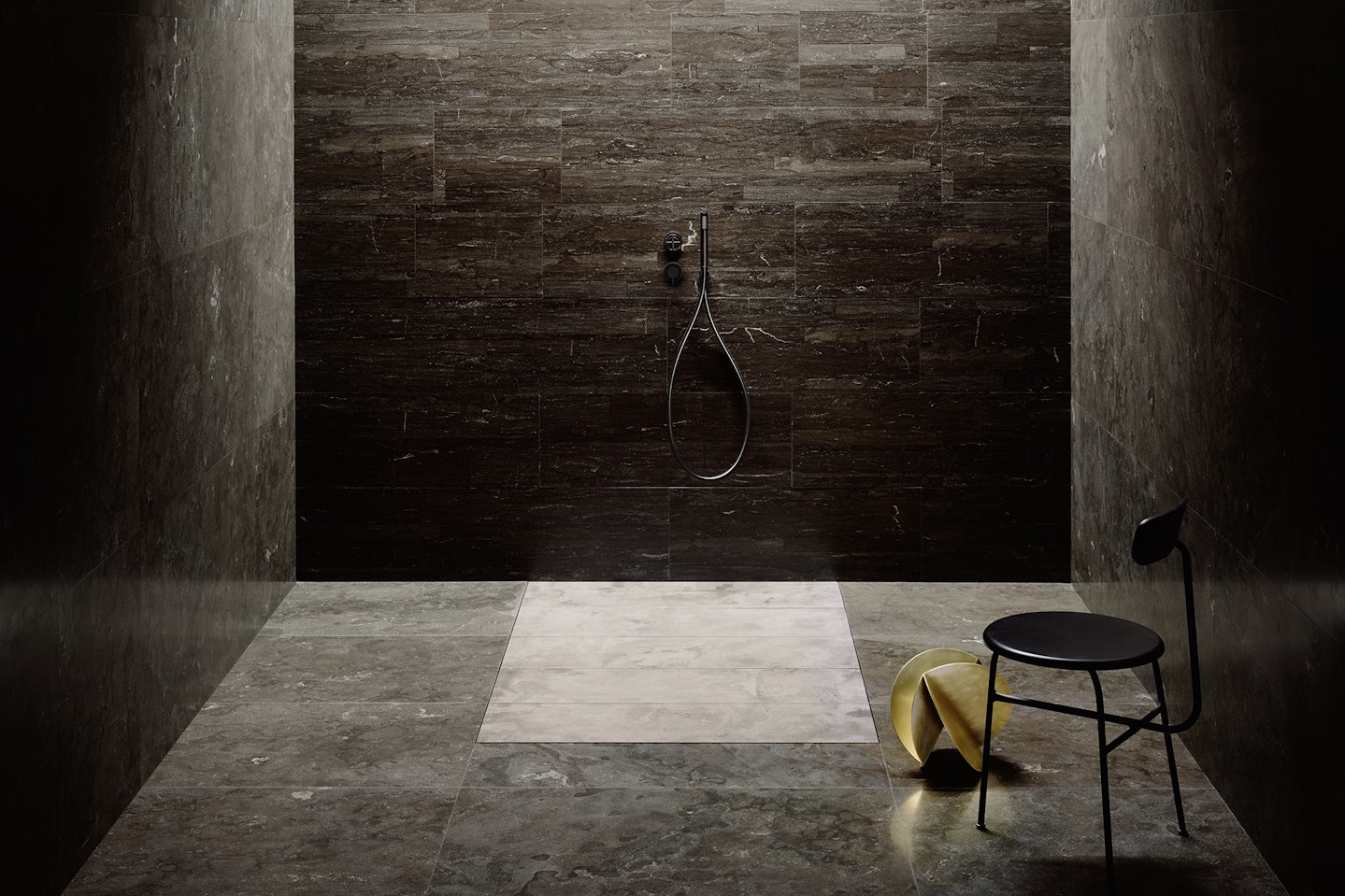How to clean and look after natural stone
03.2022
To ensure your natural stone maintains its extraordinary beauty, here are a few essential tips
A guide to caring for natural stone
Natural stone is increasingly being chosen by architects to adorn homes, offices, hospitality venues and commercial premises. Elegant and stylish, it merits the appropriate care so we have put together some guidelines with advice on how to look after it and ensure that its beauty remains undimmed over the years.
Wonderfully versatile and suitable for almost any type of space, natural stone is also extremely hardwearing and tough. However, like any material, it needs attention, particularly when it comes to cleaning. This way, you optimise its inherent benefits and know that your walls, floors, furnishings and accessories will continue to bring you the same joy throughout the decades as on the very first day you laid eyes on them.
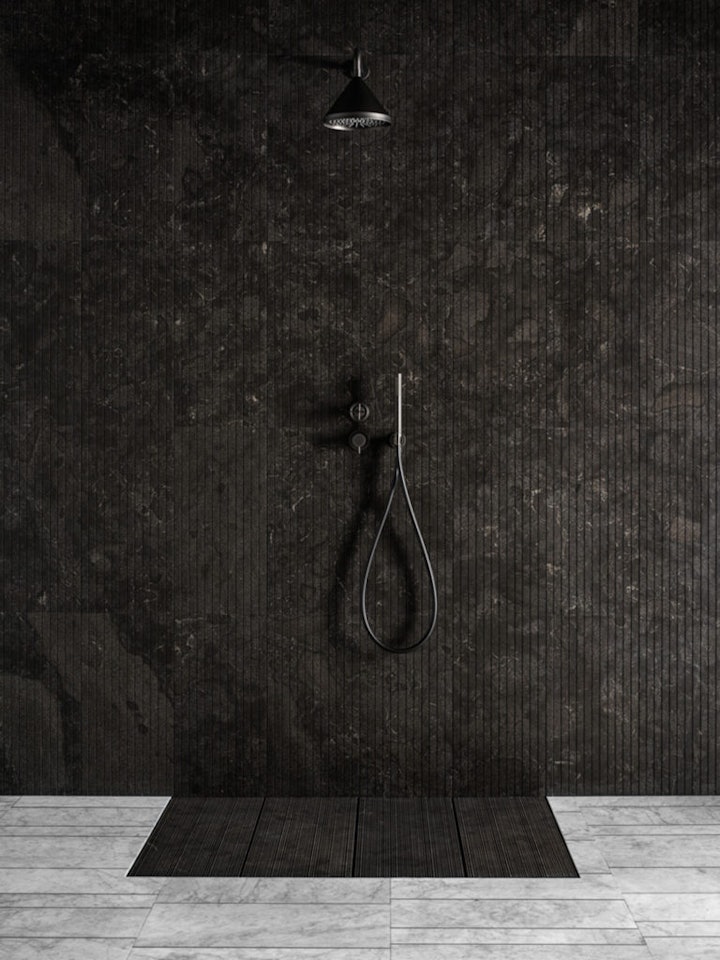
The advantages of natural stone
When you choose natural stone tiles or furnishings, you are probably already aware of its many benefits. Starting with its aesthetics, we have extraordinary colours and veining of nature that are given a subtle twist to create textures and finishes that bring personalised style to any environment.
Every single slab and tile is unique and it is this characteristic that is perhaps its most special aspect and what sets it apart from any other material in the world of interior design.
There are other, more pragmatic advantages to natural stone, however and one of those is sustainability. Firstly, because it is so durable and timeless, it doesn’t need to be replaced every few years, so it represents the antithesis of today’s “throw away” philosophy. At Salvatori, for many years we have used processes that minimise any impact on the environment and are based on recycling wherever possible, be that water or the materials we work with. We have developed products that are entirely made from offcuts or reclaimed stone, such as Lithoverde®, Romboo and Lost Stones. This trio of textures are examples of what you can achieve in design when you push your creative and technological boundaries, and the proof that sustainability does not come at the cost of aesthetics.

Because it is extremely hardwearing, natural stone tends not to deteriorate over time and can withstand heavy wear and tear and the elements. This makes it versatile and suitable for use both indoors and out, and ideal for a dazzling array of products from external structures and architectural elements such as pillars through to tiles, furniture and accessories.
As tough as it is, however, natural stone will always benefit from a little TLC. In fact, we would go so far as to say that such a beautiful and precious material deserves to be looked after. With that said, we wanted to share some of the ways we ourselves care for the natural stone products we create.
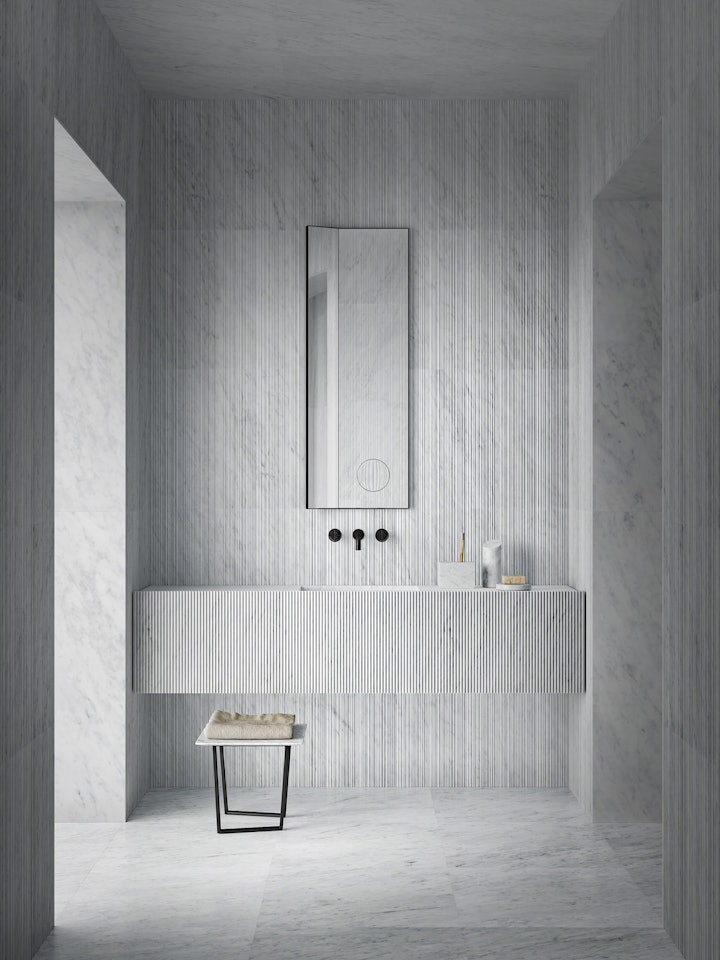
Looking after natural stone
Protecting natural stone, whether it is marble, limestone or travertine, is fundamental. Even though it is hardwearing and able to cope with weight or heavy objects being dropped on it and vice versa, it will inevitably lose some of its beauty if it becomes scratched or if dirt builds up. That is why we apply a sealant to every finished product that leaves our premises in Tuscany, apart from our tiles. The reason is that the treatment should be applied to a natural stone wall or floor once it has been installed, however we provide detailed instructions of how to do this with every order.
To ensure your stone maintains its beauty, it needs to be regularly cleaned. There is nothing particularly onerous or complex, but the main thing is to run a cloth or mop over it so that dirt, dust and substances such as soap scum, if it is in a bathroom, don’t build up and become stubborn stains. In general, for routine cleaning, all you need is water, but ensure you dry it off so that pools don’t form and stagnate.
If you want to go a little further, you can use specific cleaning products which we talk about in more detail below. Here too, it is important to rinse well so that you don’t leave traces of detergent that can build up and create dull patches on your stone. Again, you should dry it off.
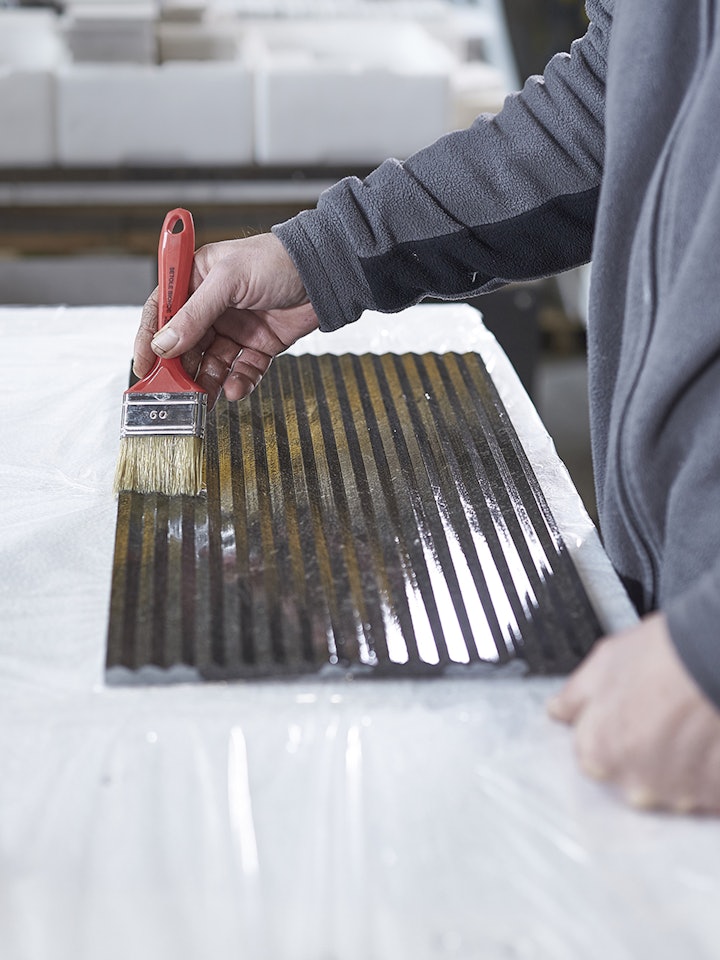
Cleaning products for natural stone
Choosing the right products to clean your natural stone is extremely important. As we said above, water is fine for daily cleaning but you should also use some sort of detergent every now and then, particularly on a floor which is obviously going to be more subjected to dirt than other types of surfaces.
The key thing to look for when you are deciding on a cleaning product is that it is pH-neutral. There are a number of products on the market that are designed specifically for cleaning marble and other types of natural stone, leaving it clean without damaging its surface. These types of cleansers avoid the risk of corroding the stone or leaving marks.
We have tested extensively over the years to find the most suitable products for regular cleaning and we can comfortably recommend the following from the Fila range:
- For worktops, showers, basins, sinks, bathtubs and tables: Fila Clean&Shine
- For floors and walls: FilaCleaner Pro
Of course, we always advise carefully reading the instructions that come with any cleaning product and following the suggested dilution and use.
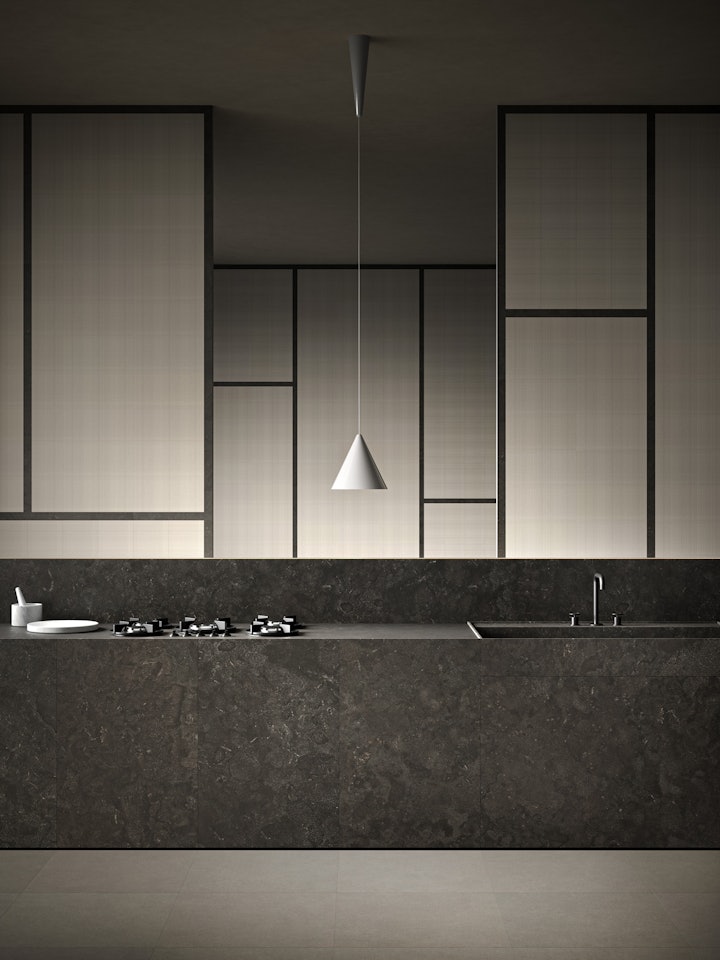
Enemies of natural stone
While the products we suggested above are ideal for looking after this precious natural material, there are others that are not quite as friendly and, in fact, can cause irreparable damage.
Any aggressive cleaning product should be considered an enemy of natural stone. These include any substances with a pH level above 7, such as bleach, ammonia and even those traditional DIY concoctions such as vinegar, lemon juice or citric acid. They can ruin the stone’s natural lustre and uniform surface.
Another enemy is limescale remover as it can break down the calcite that is such an integral component of all types of natural stone and create little cavities.
Last, and absolutely to be avoided at all costs is hydrofluoric acid. One of the worst enemies, it can cause irreparable damage by breaking down the quartz contained in natural stone and ruining its wonderful smoothness.
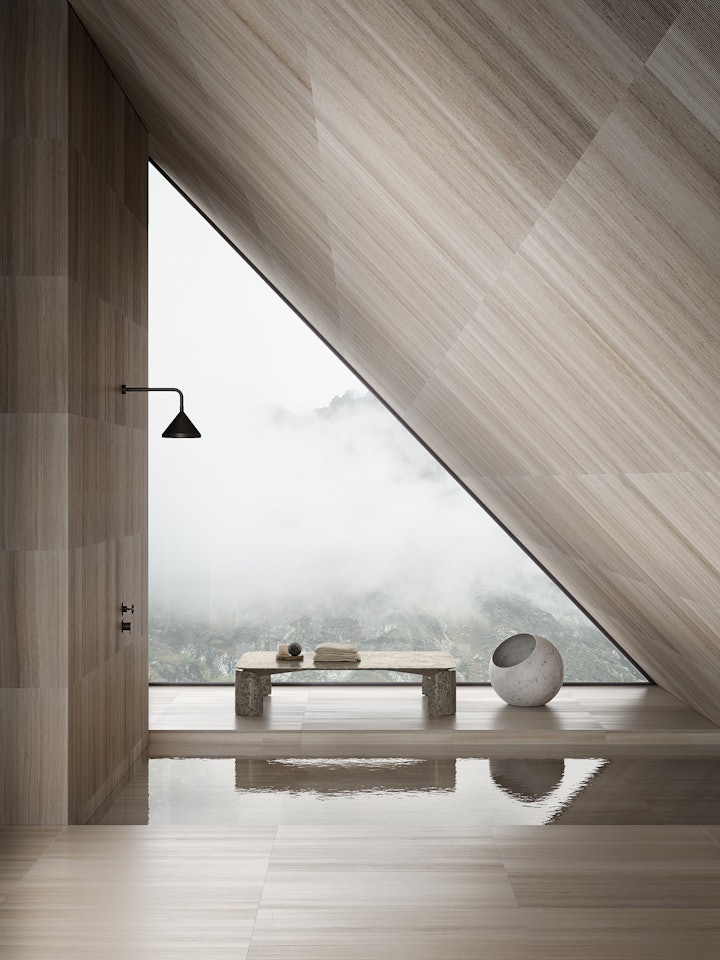
How to remove stains and stubborn dirt
To keep stone walls, floors and patios in impeccable condition, you will need to know how to remove stubborn dirt and stains.
Natural stone is an absorbent material so you do need to act so that dirt or other substances don’t have time to sink in and create stains. The best course of action is to remove anything immediately, be it a drop of wine, oil or coffee. In such cases, a quick wipe with water and a soft cloth will do the trick.
With the best will in the world, however, you may not manage to intervene quickly and may only notice a stain some days, or even weeks, later. If this happens, you will need to use products designed for this express situation, and we take a detailed look at this in this article on how to clean natural stone floors. It outlines what to do and recommends products that remove dirt and stains without leaving traces on the surface, ensuring it maintains its natural beauty.
